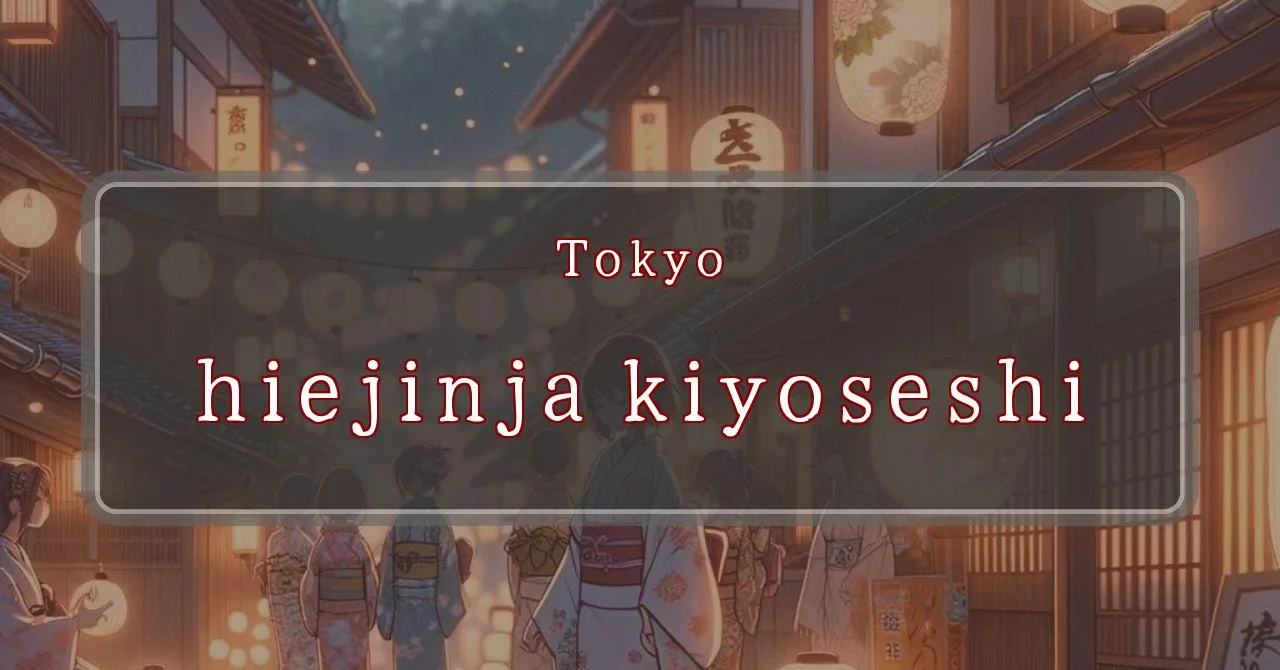Enchanting shrine festival in Kiyose City
Basic Information
Hie Jinja Shrine is a Shinto shrine located in Kiyose City, Tokyo, Japan. It is dedicated to the gods Ōmononushi and Ōyamatsumi, and is known for its annual festival held on July 15th.
- Address: 2-616 Nakaseido, Kiyose, Tokyo 204-0012
- Phone Number: 042-493-5211
- Access: 15-minute walk from Kiyose Station on the Seibu Ikebukuro Line
- Festival Days: July 15th (Sunday), 2024
Main Events and Attractions of the Festival
The Hie Jinja Shrine Festival is a lively and colorful event that attracts many visitors each year. The main events and attractions of the festival include:
Mikoshi Procession
A mikoshi is a portable shrine that is carried through the streets during Japanese festivals. The Hie Jinja Shrine mikoshi is a large and elaborate structure, and it is carried by a team of people. The procession is a lively and colorful sight, and it is a highlight of the festival.
獅子舞 (Lion Dance)
The lion dance is a traditional Japanese dance that is often performed at festivals. The Hie Jinja Shrine lion dance is performed by a group of people wearing lion costumes. The dance is energetic and entertaining, and it is a popular attraction for visitors of all ages.
Food Stalls
There are many food stalls at the Hie Jinja Shrine Festival, selling a variety of delicious Japanese foods. Some of the most popular foods include yakitori (grilled chicken skewers), takoyaki (octopus balls), and kakigori (shaved ice with syrup). There are also many stalls selling souvenirs and crafts.
Fireworks Display
The Hie Jinja Shrine Festival concludes with a spectacular fireworks display. The fireworks are launched from a nearby park, and they light up the night sky with their brilliant colors. The fireworks display is a fitting end to a lively and enjoyable festival.
Blessings and Deities
Hie Jinja Shrine is dedicated to the gods Ōmononushi and Ōyamatsumi. Ōmononushi is the god of marriage, business, and prosperity, while Ōyamatsumi is the god of mountains and agriculture. Visitors to the shrine pray for good luck in these areas, as well as for general health and happiness.
Origin and History
The exact origins of Hie Jinja Shrine are unknown, but it is believed to have been founded in the 16th century. The shrine was originally located in a different part of Kiyose City, but it was moved to its current location in 1872. The shrine has been a popular place of worship for local residents ever since.
Tips and Notes for Visitors
Here are some tips and notes for visitors to Hie Jinja Shrine:
- The shrine is open every day from 9:00 AM to 5:00 PM.
- Admission is free.
- There is a parking lot available for visitors.
- The shrine is a popular place for weddings and other ceremonies, so it is best to avoid visiting during these times.
- There are several restaurants and shops in the area surrounding the shrine.
Parking Information
There is a parking lot available for visitors to Hie Jinja Shrine. The parking lot is located next to the shrine, and it can accommodate up to 100 cars. The parking fee is 500 yen per day.
Popular Stalls and Food Carts in Recent Years
| Type of Stall | Description |
|---|---|
| Takoyaki | A staple at Japanese festivals. Characterized by a crispy outside and a creamy inside. |
| Jaga Butter | A simple yet popular snack of hot potatoes lavishly topped with melted butter. |
| Baby Castella | Small castella cakes, sweet and fluffy treats enjoyed by children and adults alike. |
| Grilled Ayu with Salt | Fresh ayu fish grilled whole with salt, a savory taste of Japanese summer. |
| Shaapin | A unique gourmet item influenced by foreign cuisine, with a chewy skin wrapping the filling. |
| Okonomiyaki | A Japanese grilled dish where you often choose your own ingredients for a personalized flavor. |
| Cotton Candy | A fluffy, sweet snack that’s extremely popular with children. |
| Chocolate Banana | A banana coated in chocolate, a fun and visually appealing dessert. |
| Kushiyaki | Various types of ingredients skewered and grilled, an easy-to-enjoy snack. |
| Yakisoba | Fried noodles mixed with a special sauce, a fast food favorite in Japan. |



